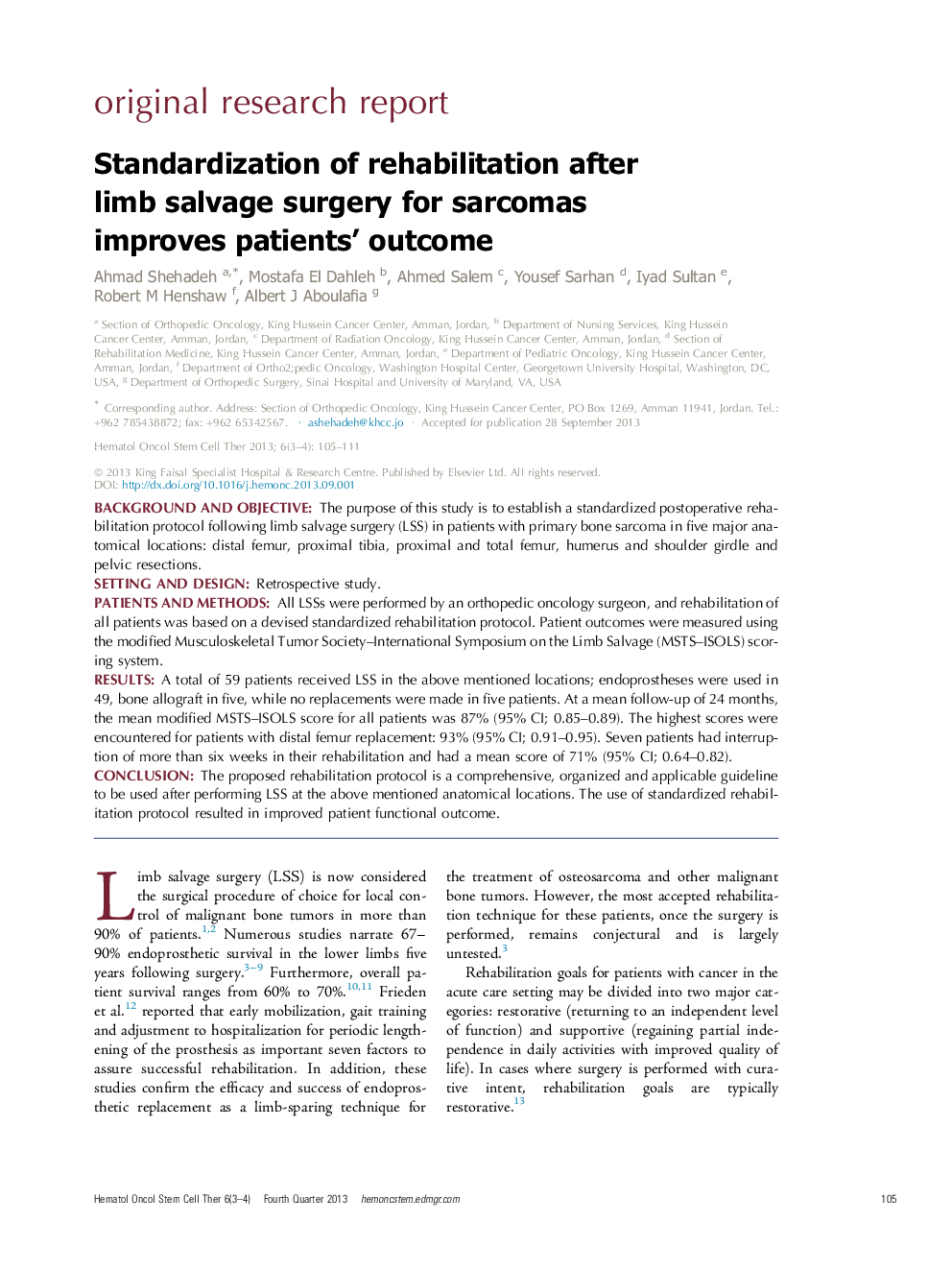| Article ID | Journal | Published Year | Pages | File Type |
|---|---|---|---|---|
| 2135869 | Hematology/Oncology and Stem Cell Therapy | 2013 | 7 Pages |
Background and objectiveThe purpose of this study is to establish a standardized postoperative rehabilitation protocol following limb salvage surgery (LSS) in patients with primary bone sarcoma in five major anatomical locations: distal femur, proximal tibia, proximal and total femur, humerus and shoulder girdle and pelvic resections.Setting and designRetrospective study.Patients and methodsAll LSSs were performed by an orthopedic oncology surgeon, and rehabilitation of all patients was based on a devised standardized rehabilitation protocol. Patient outcomes were measured using the modified Musculoskeletal Tumor Society–International Symposium on the Limb Salvage (MSTS–ISOLS) scoring system.ResultsA total of 59 patients received LSS in the above mentioned locations; endoprostheses were used in 49, bone allograft in five, while no replacements were made in five patients. At a mean follow-up of 24 months, the mean modified MSTS–ISOLS score for all patients was 87% (95% CI; 0.85–0.89). The highest scores were encountered for patients with distal femur replacement: 93% (95% CI; 0.91–0.95). Seven patients had interruption of more than six weeks in their rehabilitation and had a mean score of 71% (95% CI; 0.64–0.82).ConclusionThe proposed rehabilitation protocol is a comprehensive, organized and applicable guideline to be used after performing LSS at the above mentioned anatomical locations. The use of standardized rehabilitation protocol resulted in improved patient functional outcome.
